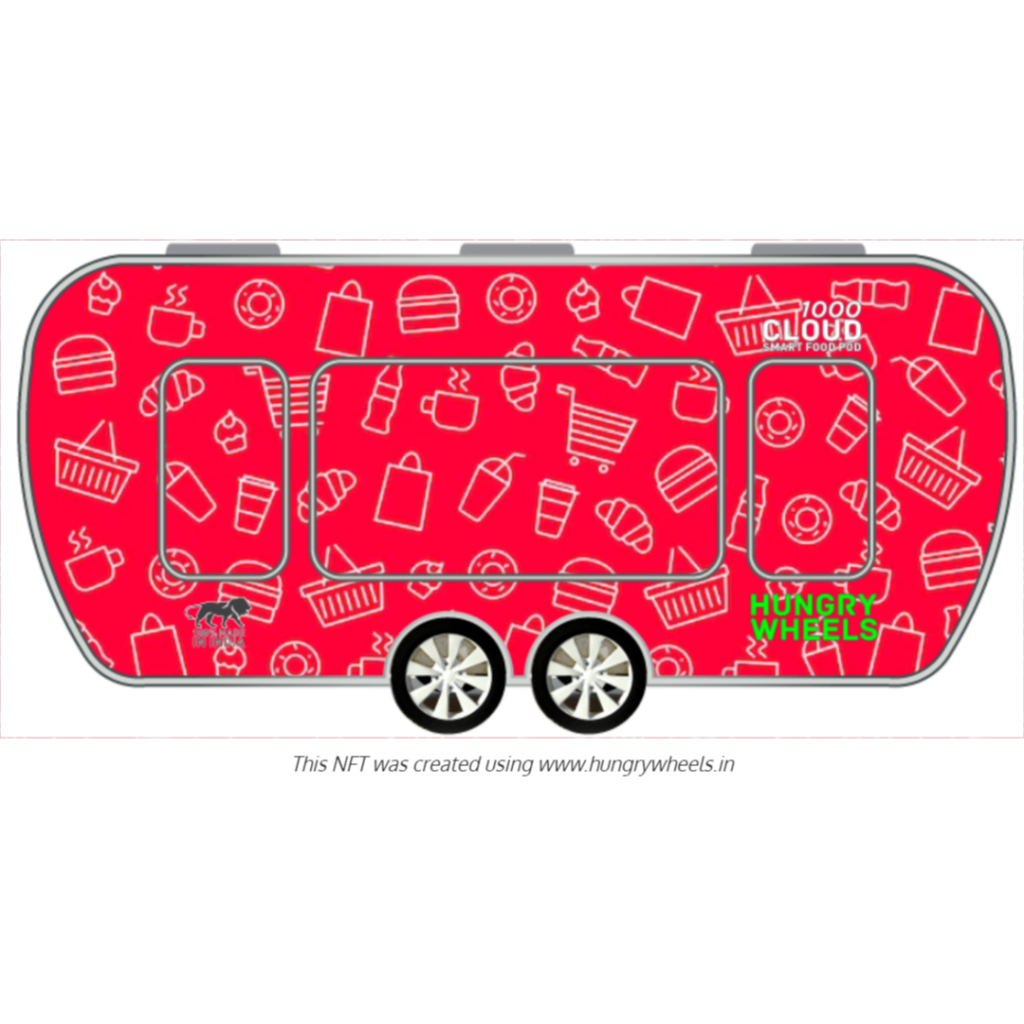In the dynamic world of culinary entrepreneurship, the food cart has emerged as a symbol of innovation and accessibility. Aspiring chefs and entrepreneurs are increasingly turning to the streets to share their culinary creations with the world.
Crafting a trendy and efficient food cart design is crucial for standing out in this competitive landscape. In this blog post, we will explore essential tips and strategies to help you design a food cart that not only catches the eye but also enhances operational efficiency.
Food Cart Design Tips and Tricks
Maximizing Space without Compromising Style:
Efficient use of space is paramount in a food cart. Embrace smart storage solutions, such as foldable shelves and hidden compartments, to make the most of every inch. Incorporate sleek and compact appliances to maintain a stylish aesthetic without sacrificing functionality.
Eye-Catching Aesthetics:
A trendy food cart design is a visual feast for potential customers. Choose a cohesive color scheme and branding that reflects your culinary identity. Invest in high-quality signage and graphics that are not only visually appealing but also communicate your menu and brand personality effectively.
Ergonomics and Workflow Optimization:
Streamline your workflow by strategically placing cooking and prep areas for maximum efficiency. Consider the ergonomic layout of equipment and workstations to ensure a smooth and organized operation. A well-designed flow not only enhances efficiency but also contributes to a positive customer experience.
Incorporating Sustainable Elements:
Sustainability is not just a trend; it’s a responsibility. Infuse eco-friendly elements into your food cart design, such as recycled materials, energy-efficient appliances, and compostable packaging. Not only does this appeal to environmentally conscious customers, but it also showcases your commitment to responsible business practices.
Technology Integration for Seamless Operations:
Embrace technology to simplify transactions and enhance customer service. Utilize point-of-sale (POS) systems, contactless payment options, and digital menu boards to create a modern and efficient ordering process. Seamless operations contribute to quicker service and increased customer satisfaction.
Flexibility for Diverse Locations:
Adaptability is key in the world of food carts. Design your cart to be easily transportable and set up in diverse locations. Consider foldable components, modular design, and lightweight materials to facilitate hassle-free mobility.
In the ever-evolving landscape of mobile cuisine, the choice between a food truck and a food pod can be a challenging decision. While food trucks present unique benefits, opting for a food pod often proves to be the superior choice in terms of convenience, versatility, and engagement with customers.
Hungry Wheel Food Pods offer an unbeatable blend of sustainability, safety, support, and convenience, making them the optimal selection for mobile food vendors. With zero emissions, a family-friendly atmosphere, official approval, flexible financing, easy compliance, and extensive insurance coverage, Hungry Wheel sets the benchmark for excellence in the mobile dining sector.
For any further inquiries or to discover the innovative features of Hungry Wheel’s eco-friendly food pods, please feel free to reach out. We’re dedicated to aiding you in revolutionizing your mobile food enterprise. Contact us today to embark on your journey towards sustainable and prosperous mobile dining ventures.
To sum up, food pods present a winning amalgamation of community, culinary variety, convenience, affordability, ingenuity, and local backing that distinguishes them as the ultimate option for mobile dining experiences. Whether you’re a vendor aiming to showcase your culinary expertise or a customer in search of a memorable gastronomic escapade, embracing the food pod revolution ensures an unparalleled feast for the senses.
FAQ: The Art of Creating a Functional and Stylish Food Cart: Design Tips and Tricks
1. How can I make my food cart stand out?
To make your food cart stand out, focus on creating a unique and eye-catching design. Consider using vibrant colors, bold signage, and distinctive branding elements that reflect the personality of your business. Additionally, incorporating innovative menu items or offering specialty cuisines can help differentiate your food cart from others in the area.
2. What are some essential design considerations for a food cart?
When designing a food cart, it’s essential to prioritize functionality, space optimization, and ease of use. Ensure that your layout allows for efficient workflow, with designated areas for food preparation, cooking equipment, storage, and customer service. Maximize space by utilizing vertical storage solutions and compact appliances. Additionally, consider factors such as ventilation, lighting, and accessibility to create a comfortable environment for both customers and staff.
3. How can I incorporate sustainability into my food cart design?
To incorporate sustainability into your food cart design, opt for eco-friendly materials and energy-efficient appliances. Use recyclable or biodegradable packaging for serving food, and consider implementing practices such as composting or sourcing local, organic ingredients. Additionally, you can reduce waste by offering reusable utensils and encouraging customers to bring their own containers for takeout orders.
4. What role does branding play in food cart design?
Branding is crucial for establishing a strong identity and attracting customers to your food cart. Develop a cohesive brand identity that reflects your values, cuisine, and target audience. This includes designing a memorable logo, choosing consistent fonts and colors for signage and menus, and creating branded merchandise or packaging. Effective branding helps build trust and loyalty among customers and sets your food cart apart from competitors.
5. How can I ensure compliance with health and safety regulations in my food cart design?
When designing your food cart, prioritize hygiene, sanitation, and compliance with local health and safety regulations. Install proper handwashing stations and sanitation supplies for staff, and ensure that food storage and preparation areas are kept clean and organized. Design your cart layout to facilitate proper food handling practices, with separate zones for raw and cooked foods to prevent cross-contamination. Regularly inspect and maintain equipment to ensure safe operation, and stay informed about any updates to health and safety guidelines in your area.
Conclusion:
Crafting a trendy and efficient food cart design is a blend of creativity, functionality, and adaptability. By incorporating these essential tips into your design process, you can create a mobile culinary masterpiece that not only attracts attention but also delivers a seamless and enjoyable dining experience. As you embark on this journey, remember that your food cart is not just a vehicle for serving delicious bites—it’s a canvas for culinary expression and a portal to a world of flavors on the go.
Mobility architect, system designer, and ecosystem builder
Since 2012, he has developed various scalable vehicle platforms and solutions for retail, logistics, and defense. As a possibilist, futurist, and innovator, Vikram’s designs have powered the success of Food POD mobile kitchens at ITC, TAJ Hotels, Qmin, Manipal Group, and more.





